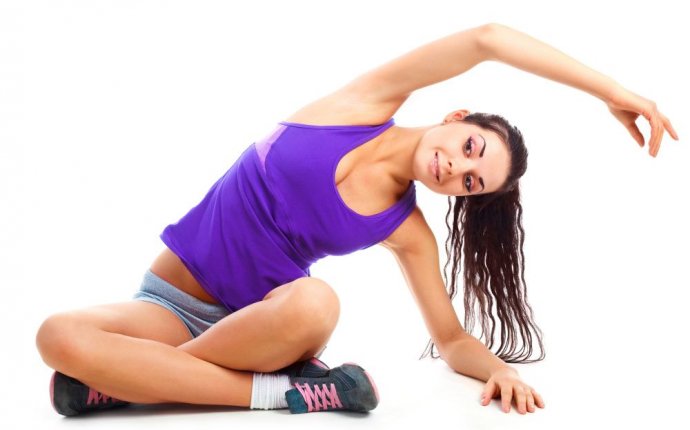
Lower back pain Exercises Stretch
From someone who has endured low back pain the better part of 30-plus years, I understand how debilitating it can be. There were times when my back hurt so badly that I couldn't stand or walk. The only remedy, or so I thought, was rest. Now I know better.
I've spent the last 2-1/2 years studying for my associate's degree in physical therapy. And after learning more about human muscle and bone anatomy than I ever thought I would, I've come to the realization that the majority of my low back pain was/is a combination of genetics, muscle strength, and flexibility.
The purpose of this article is to inform those of you suffering with similar pain and hopefully provide a hint of education on how you can improve—and hopefully remove—your lower back pain. The muscles of lower back extension and flexion along with hip flexion and extension will be discussed due to their integral and synergistic actions on the back and hip.
Posture is Paramount
As you can see in the illustration at right, the ideal spinal posture for optimum body efficiency and mechanics consists of a straight line that runs from the middle of the ear, touches the apex of the pelvic bone (coxal), continues parallel to the upper and lower leg bones (femur & tibia), and ends at the foot, or more precisely, the lateral malleolus.
It bears mentioning that posture and overall postural control, which is provided primarily by muscle and bone integrity, is hugely responsible for overall bone, joint, muscle, and other connective tissue efficiency. If one of these components is compromised, for whatever reason, your posture and subsequent body-mechanics suffer. The end result is often weakness, lowered flexibility, and most importantly for many, pain-primarily lower back pain.
For the remainder of this hub, I'll briefly describe a pair of abnormal postural positions that play heavily on lower back pain. These postural deviations are: an anterior pelvic tilt and a posterior pelvic tilt.
Anterior Pelvic Tilt:
An anterior pelvic tilt is defined as the superior (or top) part of the pelvis tilting forward while standing or seated upright. Think of your pelvis as a hypothetical rocking chair moving forward and backward. The anterior tilt is the forward position. The result of a forward tilt is increased hip flexion (or bending) and more than likely an increased lordosis (or arching of the lower back).
The problems associated with an anteriorly-tilted pelvis are additional strain and work placed on the lower back muscles designed to keep the pelvis in a slightly extended neutral position; primarily the back extensors. See the illustration comparing these two postures in this hub.
Posterior Pelvic Tilt:
A posterior pelvic tilt, as most would assume, is the opposite of an anterior pelvic tilt where the superior pelvis is tilted posteriorly; as in going backward on our hypothetical rocking chair. The results are a decreased lumbar lordosis (a flattened back) and increased strain and work placed on the muscles that support a slightly flexed neutral pelvis; primarily the lower abdominals. A common clinical term for posterior pelvic tilt is swayback.
Hip Postural Abnormalities and Potential Causes
Quick note: Stretched muscles are often weak and in need of strengthening while tight muscles are shortened and in need of stretching.
Increased lordosis: Anterior Pelvic Tilt
- Stretched lower abdominals (Rectus Abdominis)
- Possibly tight and/or weak hip flexors (Rectus Femoris & Iliopsoas muscles)
- Possibly tight erector spinae (ES) muscles
- Tight and/or weak gluteal muscles (hip extensors)
- Tight and/or weak hip external rotators (Gluteus Maximus & Piriformis)
- Tight and/or weak tight Hamstrings
Swayback: Posterior Pelvic Tilt
- Increased spine extension
- stretched lower abdominals
- Tight ES (Back Extensor Muscles)
Decreased lordosis: Posterior Pelvic Tilt
- Tight lower abdominals
- Stretched/weakened ES
- Lumbar spine flexed
Primary Muscles of the Hip and Lower Back
Since they are the primary movers and controllers of hip flexion (bending) and extension (straightening), the following hip muscles will be discussed:
Hip Flexors:
Iliopsoas: Action: Primary Hip Flexion
- Origin (where the muscle begins): T12-L5 Vertebrae
- Insertion (where the muscle ends): Lesser trochanter of the Femur (upper leg bone)
Rectus Femoris: Action(s): Primary Hip Flexion and knee extension
- Origin: Anterior-Inferior Iliac Spine (the bottom front of the pelvic bone)
- Insertion: Tibial Tuberosity (the larger lower leg bone)
Hip Extensors:
Gluteus Maximus: Action(s): Primary Hip Extension and External Rotation
- Origin: Posterior aspects of the pelvic bone (Coxal bone)
- Insertion: IT band and gluteal tuberosity of the Femur
Hamstrings (3 total): Action(s): Primary hip extension and knee flexion
- Origin: Ischial Tuberosity (lower portion of the pelvic bone)
- Insertion: 2 (Semitendinosus and Semi Membranosus) insert on the Tibia and 1 (Biceps Femoris) inserts on the Fibula (the smaller, outside lower leg bone)
The following muscles are the primary movers of lower back flexion and extension:
Lower Back Flexors:
Rectus Abdominis: Action(s): Trunk Flexion & Posterior Pelvic Tilt
- Origin: Pubic Crest (lower portion of the pubic bone)
- Insertion: Xiphoid Process (Lower sternum) and ribs 5-7
Lower Back Extensors:
Erector Spinae Group (ES): Action: Primary Trunk Extension (Bending backward)
- Origin: Basically the entire vertebral column (C3 through T6)
- Insertion: C2 through T12
A quick note: All of the above muscles are integral to proper posture and alignment of the hip and spine. Weakness and/or tightness leads to overcompensation of alternate muscles which often results in pain and/or discomfort.









